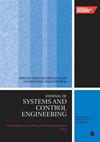Emulator of electrocardiographically biopotentials based on a sliding mode controlled buck power converter
IF 1.4
4区 计算机科学
Q4 AUTOMATION & CONTROL SYSTEMS
Proceedings of the Institution of Mechanical Engineers, Part I: Journal of Systems and Control Engineering
Pub Date : 2024-01-04
DOI:10.1177/09596518231207413
引用次数: 0
Abstract
The primary objective of this research is to present the design of an artificial signal generation system of electrocardiography continuous signals based on the application of a buck power converter. A first-order sliding mode control application for a buck direct current–direct current power converter induces the generation of continuous variations of a direct current voltage as the response of a power converter. The output voltage reproduces the required electrocardiography signals corresponding to the regular or pathological variants. The equivalent control method permits introducing a novel design of a kind of cascade-like sliding mode controller that can regulate both current and voltage operative loops simultaneously, which force the controlled tracking of the reference bioinspired voltages at the output of the buck power converter. For the developed control design, the current regulation is enforced as the primary outcome of the sliding mode controller. Consequently, the required voltage from the buck converter is produced, regulating the switching operation in the electrical power system. The suggested control operates robustly concerning the internal uncertainties and perturbations for both input and voltage signals. Furthermore, the variation of the needed gain for the designed sliding mode controller is developed by studying the online amplitude of the electrocardiography electrophysiological signals used as references and their time derivatives over time. Two reference signals were developed to validate the controllers with the same quality at the numerical simulation and using some experimental validations. The proposed signals used as references were successfully generated in both evaluated cases.基于滑模控制降压功率转换器的心电图生物电位仿真器
本研究的主要目的是基于降压电源转换器的应用,提出心电图连续信号人工信号生成系统的设计方案。在降压直流-直流电源转换器中应用一阶滑动模式控制,诱导产生连续变化的直流电压,作为电源转换器的响应。输出电压再现所需的心电图信号,与常规或病理变体相对应。等效控制方法允许引入一种类似级联滑动模式控制器的新设计,该控制器可同时调节电流和电压工作环路,从而在降压功率转换器的输出端对参考生物启发电压进行受控跟踪。在所开发的控制设计中,电流调节是滑动模式控制器的主要成果。因此,降压转换器会产生所需的电压,从而调节电力系统的开关操作。对于输入信号和电压信号的内部不确定性和扰动,所建议的控制器都能稳健运行。此外,通过研究用作参考的心电图电生理信号的在线振幅及其随时间变化的时间导数,开发了所设计的滑动模式控制器所需增益的变化。通过数值模拟和一些实验验证,开发了两种参考信号,以验证具有相同质量的控制器。在两个评估案例中,建议用作参考的信号都成功生成。
本文章由计算机程序翻译,如有差异,请以英文原文为准。
求助全文
约1分钟内获得全文
求助全文
来源期刊

CiteScore
3.50
自引率
18.80%
发文量
99
审稿时长
4.2 months
期刊介绍:
Systems and control studies provide a unifying framework for a wide range of engineering disciplines and industrial applications. The Journal of Systems and Control Engineering refleSystems and control studies provide a unifying framework for a wide range of engineering disciplines and industrial applications. The Journal of Systems and Control Engineering reflects this diversity by giving prominence to experimental application and industrial studies.
"It is clear from the feedback we receive that the Journal is now recognised as one of the leaders in its field. We are particularly interested in highlighting experimental applications and industrial studies, but also new theoretical developments which are likely to provide the foundation for future applications. In 2009, we launched a new Series of "Forward Look" papers written by leading researchers and practitioners. These short articles are intended to be provocative and help to set the agenda for future developments. We continue to strive for fast decision times and minimum delays in the production processes." Professor Cliff Burrows - University of Bath, UK
This journal is a member of the Committee on Publication Ethics (COPE).cts this diversity by giving prominence to experimental application and industrial studies.
 求助内容:
求助内容: 应助结果提醒方式:
应助结果提醒方式:


